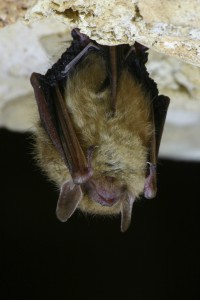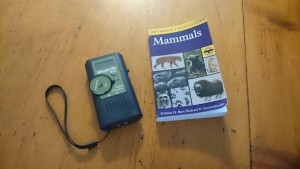Help us Find At-risk Bats in your NatureHood!
 Have you ever wondered if there are bats in your neighbourhood? What about your yard? If so, Nature Canada can help you answer this question with the handheld bat detectors we have available through our lending library! If you live in the National Capital Region, you can borrow a detector – free of charge – for up to one week.
Have you ever wondered if there are bats in your neighbourhood? What about your yard? If so, Nature Canada can help you answer this question with the handheld bat detectors we have available through our lending library! If you live in the National Capital Region, you can borrow a detector – free of charge – for up to one week.

The Eastern Pipistrelle is a migratory bat found in southeastern Canada and the eastern United States. It feeds on flying insects most actively during the crepuscular period at dawn and dusk.
But we’re not doing this for just any reason. Here’s the scoop: Have you heard about White-nose Syndrome (WNS), an introduced fungal disease (Pseudogymnoascus destructans) that’s decimating many bat populations in North America? Estimates place the death toll from WNS at over 6 million bats since it was first detected in North America in 2006 (read Ontario’s response plan here). Sadly, populations of up to 7 different bat species found in and around Ottawa have been impacted by WNS, and 3 of those species currently legally designated as “endangered” by the Government of Ontario: Little brown myotis (Myotis lucifugus), Northern myotis (Myotis septentrionalis) and Eastern small-footed myotis (Myotis leibii). Given this situation we need to understand the habitats these bat species are using and how local populations are doing. That’s where the bat detectors – and YOU – come in.
Members of the public can borrow one of our Magenta Bat5 handheld bat detectors to ‘hear’ the ultrasonic echolocation signals – similar to sonar – that bats make as they fly, socialize and feed. Human ears are not capable of hearing sound in the frequency ranges at which most bats echolocate – that’s why the frequencies are called “ultrasonic”. The bat detectors pick up these ultrasonic signals and convert them into the audible range for humans, playing them for you in real-time through a speaker in the unit. Many bats echolocate at different frequencies, though there is just enough overlap between them to make things confusing! By ‘tuning’ the bat detector to hone in on particular frequencies, you can get a sense of which species you may be detecting. With practice in the field, and

You can borrow the Magenta Bat5 handheld bat detector (shown here) for up to 1-week using our lending library!
following the tips we provide here, you can get pretty good at recognizing the different species.
If you’re interested in helping us monitor for the presence (or absence) of at-risk bat species in the National Capital Region, you can download the sign-out sheet here. Simply submit the form by email or drop it off when you pick up the detector at our office at 75 Albert Street (third floor, suite 300). And our data submission form is available online or as a hard-copy.
You can use the detector in your backyard, in your neighbourhood or at a local park, or you might consider visiting one of the areas we’re hoping to cover in our seasonal surveys (see map below).
Financial support for this project is provided by:





